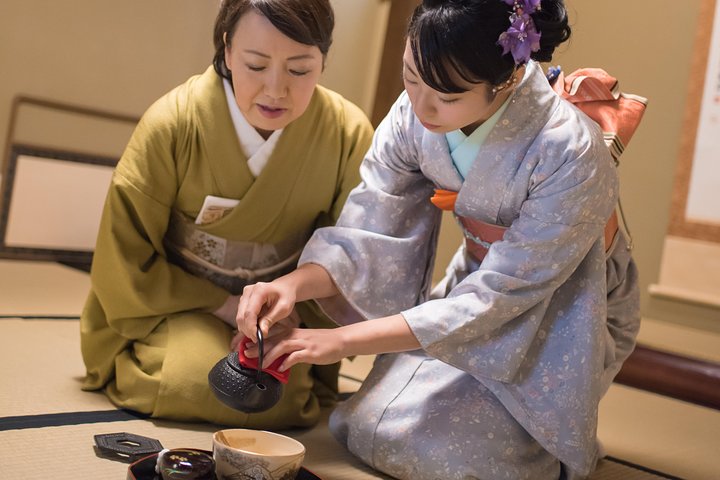Why choose this Asakusa tour ?
Embark on a captivating adventure through Tokyo’s historical district – Asakusa – with my private walking tour!
Culinary Delights: Indulge your taste buds with delectable street food and authentic Japanese delicacies. From quirky Asakusa melon pan to Rokkus bustling pub scene, this tour is a gastronomic delight.
Ready to walk on the historical center of Tokyo? Join me for a tour that blends tradition with the avant-garde, offering an unforgettable journey through the beating heart of Asakusa. Secure your spot now and let the adventure begin!
Make the most of your Asakusa adventure
What makes 2 Hours Private Walking Tour in Asakusa Tokyo a unique experience ?
The Kaminarimon Gate in Asakusa is one of Tokyo’s most famous landmarks, standing as the grand entrance to Senso-ji Temple, the city’s oldest and most significant Buddhist temple. Its official name is Fūraijinmon, named after the Shinto gods of wind (Fūjin) and thunder (Raijin), whose large statues guard the gate.
The gate’s massive red lantern is an iconic symbol of Asakusa, weighing over 700 kg. What many people overlook is the dragon carving underneath the lantern, a hidden detail symbolizing protection and good fortune.
Kaminarimon is a perfect blend of history, spirituality, and the lively energy of modern Tokyo, making it a must-see on any walking tour of Asakusa.
Beyond the gate, visitors enter Nakamise-dori, a vibrant shopping street that has served pilgrims and tourists for centuries, offering traditional snacks, souvenirs, and local crafts.
Senso-ji Temple, founded in 628 AD, is Tokyo’s oldest and most iconic Buddhist temple. Dedicated to Kannon, the goddess of mercy, it draws millions of worshippers annually. Legend says two fishermen discovered a Kannon statue in the Sumida River, inspiring the temple’s creation. Key features include the Main Hall, housing a replica of the hidden statue, and the Five-Story Pagoda, representing Buddhist elements. The bustling Nakamise-dori leads to the temple, offering traditional snacks and crafts, making Senso-ji a vibrant mix of history, spirituality, and culture.
Kagetsudo, located near Senso-ji Temple in Asakusa, is a famous shop renowned for its melonpan, a sweet, fluffy bread with a crispy outer layer. Established in 1945, Kagetsudo has been a beloved destination for both locals and tourists seeking this iconic Japanese snack. The shop is known for making oversized melonpan, freshly baked each day. Visitors often stop here after visiting the temple to enjoy this treat, adding a culinary highlight to their cultural experience. Kagetsudo’s melonpan has become a symbol of Asakusa’s vibrant food scene, offering a sweet taste of tradition.
Hoppy Street, located near Senso-ji Temple in Asakusa, is a lively lane famous for its old-school izakayas (Japanese pubs) and its signature drink, Hoppy. Hoppy is a low-alcohol beer-flavored beverage that gained popularity in the post-war era when beer was expensive. It’s often mixed with shochu, creating a nostalgic, refreshing drink.
Hoppy Street is perfect for those looking to experience traditional Tokyo nightlife, with locals enjoying drinks and casual food like yakitori and grilled seafood in a friendly, down-to-earth setting. The street’s retro atmosphere captures the charm of Tokyo’s Showa era.
Rokku in Asakusa was once the heart of Tokyo’s entertainment district during the Taisho and early Showa eras. Known as the Rokku District, it was famous for its theaters, cinemas, and variety halls. The area offered everything from kabuki performances to early Western films, attracting both locals and tourists. The name “Rokku” comes from the Japanese word for “six,” as it was the sixth ward of Asakusa.
Though much of its original glamour has faded, Rokku still maintains some of its old charm, with remnants of theaters and a nostalgic atmosphere. It’s a great place for visitors to imagine Tokyo’s vibrant entertainment past while exploring modern Asakusa.
Kannon-dori, also known as Kannon Street, is a lively shopping and dining street that connects visitors from the bustling Asakusa Station to Senso-ji Temple. Named after Kannon, the Buddhist goddess of mercy, the street is lined with shops offering traditional Japanese crafts, clothing, and souvenirs, along with casual eateries. Kannon-dori offers a mix of the old and new, where modern stores blend with long-established businesses that have been around for generations.
Azuma Bridge is a historic bridge that spans the Sumida River, connecting Asakusa with the Mukojima district. Built in 1931, it offers stunning views of both the Tokyo Skytree and the surrounding areas. The bridge is known for its bright red color, symbolizing vitality, and it’s a favorite spot for tourists to capture scenic photos of Asakusa’s riverside.
Historically, Azuma Bridge was vital for trade and transportation in Edo-era Tokyo. Today, it’s an important landmark, linking the traditional atmosphere of Asakusa with the modern developments across the river. It’s also a great starting point for Sumida River cruises, offering a unique perspective of Tokyo’s skyline.
Similar to the Kannon-dori, the Shin-Nakamise Street is full of shops and restaurants. Probably one of the best spots to get some unique souvenirs. With its roof its a perfect visit even on a rainy day!
Tour Description & Additional Info:
- Not recommended for travelers with spinal injuries
- Public transportation options are available nearby
- Suitable for all physical fitness levels
Options To Choose for Your Trip:
- 2 Hours Private Walking Tour in Asakusa Tokyo
Add
2 Hours Private Walking Tour in Asakusa Tokyo Inclusions:
Included with Your Ticket
- Pictures of you with famous landmarks
Not Included
- Food and drinks
Trending Asakusa Nearby Tours Likely To Sell Out
Special Instructions:
- This Tour is Provided by Shiny Tours Tokyo.
- Tour Timezone & Starts at Asia/Tokyo.
- Mobile or paper ticket accepted.
- For a full refund, cancel at least 24 hours before the scheduled departure time.
- Minimum 1 Travelers is required to book.
- Maximum 5 Travelers is accepted for booking.










